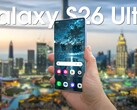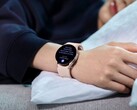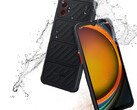Verdict
The Samsung Galaxy XCover7 Pro is in many areas much better equipped than the XCover7, but it costs more, too. Both models have their merits and can prove to be a good choice for potential buyers.
The XCover7 Pro supports WiFi 6E and, as a result, faster WLAN—plus, its performance is much better, and its wide-angle camera makes it much more flexible when it comes to taking photos and videos. It features all the necessary protection mechanisms for tough everyday work.
Although its display doesn't get super bright, the XCover7 Pro boasts a panel without any PWM flickering.
Its new sound system does its job quite well, and 7 years of software updates is a powerful statement indeed.
The phone's removable battery will likely be one of the deciding factors for most buyers. Unfortunately, it doesn't have a hot swap function.
One further point of criticism concerns the XCover7 Pro's storage configuration: 128 GB of data storage and 6 GB of RAM are a little outdated for a phone of this price class.
Now you have the choice: A cheap XCover7 or an XCover7 Pro with better features. Neither of these two phones is the wrong choice if you're looking for a durable phone that will last for ages for everyday use or for your business.
Pros
Cons
Price and availability
At the time of writing, the Samsung Galaxy XCover7 Pro is available to purchase from major online retailers such as Amazon, where it currently costs $599.99.
Table of Contents
- Verdict
- Specifications
- Case – Removable battery inside a robust case
- Connectivity – The Galaxy phone with limited storage
- Software – Long updates
- Communication and GNSS – Reliable location services
- Telephone functions and call quality – With noise suppression
- Cameras – Wide-angle lens included
- Accessories and warranty – Up to 3 years
- Input devices and operation – The XCover 7 Pro at 120 Hz
- Display – The outdoor phone with an average brightness
- Performance – A decent amount of power
- Emissions – Heats up quite a bit
- Battery life – Durable and replaceable
- Notebookcheck total rating
- Possible alternatives compared
Specifications
Case – Removable battery inside a robust case
At first glance, the front of the XCover7 Pro in particular is almost identical to the Samsung Galaxy XCover7. If you take a look at the back, on the other hand, you'll notice the second camera module that adorns the Pro version.
You can remove the back of the phone without the need for any tools, allowing you access to the removable battery. Even so, its case is protected against water and dust in accordance with IP68, meaning it can survive being submerged in shallow freshwater.
Its dimensions have only changed marginally, and its weight of 240 grams is the same. The same as on the XCover7, its display is protected by Gorilla Glass Victus+.
Connectivity – The Galaxy phone with limited storage
The phone has 6 GB of RAM and 128 GB of mass storage. This is a bit meager considering its price: A similarly priced ThinkPhone 25 offers twice as much space for data, for example.
It's nice that Samsung has seen to the device's USB port: This model now transfers data at up to 5 GBit/s, and you can even connect an external display.
microSD card reader
The maximum capacity of microSD cards that this phone's card reader can handle is up to 2 TB. As it worked reasonably quickly during our tests with our Angelbird V60 reference card, you can make use of this storage expansion method without hesitation.
| SD Card Reader - average JPG Copy Test (av. of 3 runs) | |
| Samsung Galaxy XCover 7 Pro (Angelbird V60) | |
| Cubot KingKong AX (Angelbird V60) | |
| Samsung Galaxy XCover 7 (Angelbird V60) | |
| Average of class Smartphone (5.72 - 58.9, n=69, last 2 years) | |
Cross Platform Disk Test (CPDT)
Software – Long updates
The device comes with Android 15 installed ex works, with Samsung's OneUI 7.0 on top. At the time of testing, the latest security patches were from May 2025, so still very up to date. The manufacturer promises 7 years of security patches and function updates.
Of course, the Samsung Galaxy XCover7 Pro also comes with some AI features, for example, you can circle dates on pictures and the system automatically creates an appointment from them. Data on the device can be protected via Samsung Knox, and several phones can be easily managed if you're buying them for your business.
Sustainability
Thanks to its removable battery, long software updates and well-protected case, the XCover7 Pro should last a long time, which is welcomed when it comes to its sustainability.
Unfortunately, we were unable to find specific CO2 values for the lifespan of the Galaxy XCover7 Pro. Its packaging doesn't use any plastic and is printed with soy ink.
Communication and GNSS – Reliable location services
The Samsung Galaxy XCover7 Pro has also made a leap compared to the XCover7 with regard to its communication modules: It now supports WiFi 6E. We measured between 553 and 1,620 MBit/s using our Asus ROG Rapture AXE11000 reference router. This means our test device beat lots of other outdoor cell phones.
A nano SIM and an eSIM can be used to access the cellular network, so the phone supports dual-SIM operation. Lots of 4G and 5G bands are available.
| Networking | |
| Samsung Galaxy XCover 7 Pro | |
| iperf3 transmit AXE11000 6GHz | |
| iperf3 receive AXE11000 6GHz | |
| Samsung Galaxy XCover 7 | |
| iperf3 transmit AXE11000 | |
| iperf3 receive AXE11000 | |
| Oukitel WP200 Pro | |
| iperf3 transmit AXE11000 | |
| iperf3 receive AXE11000 | |
| Motorola ThinkPhone 25 | |
| iperf3 transmit AXE11000 6GHz | |
| iperf3 receive AXE11000 6GHz | |
| Cubot KingKong AX | |
| iperf3 transmit AXE11000 | |
| iperf3 receive AXE11000 | |
| Average 802.11 a/b/g/n/ac/ax | |
| iperf3 transmit AXE11000 | |
| iperf3 receive AXE11000 | |
| iperf3 transmit AXE11000 6GHz | |
| iperf3 receive AXE11000 6GHz | |
| Average of class Smartphone | |
| iperf3 transmit AXE11000 | |
| iperf3 receive AXE11000 | |
| iperf3 transmit AXE11000 6GHz | |
| iperf3 receive AXE11000 6GHz | |
Its satellite locating abilities are similarly good, as we found out during our practical test. The Galaxy XCover7 Pro only rarely placed us slightly off course, for example when crossing a bridge. Otherwise, its positioning accuracy proved to be high, so you can usually rely on the phone's navigation data even in critical situations.
Telephone functions and call quality – With noise suppression
During our test, the phone's call quality was quite clear via the earpiece and the built-in microphone, and background noise was filtered out pretty well.
A special mode can be activated for even better noise canceling, but there is a risk that the clarity of the caller's voice will suffer somewhat as a result.
Cameras – Wide-angle lens included
The XCover7 Pro comes with an ultra-wide-angle camera, allowing users more flexibility when taking photos during everyday life. Unfortunately, however, the sensor only has a resolution of 8 megapixels. Although the resulting images are rich in color, they are somewhat lacking in detail.
The photos we took with the main camera boast a strong color reproduction, but bright areas tend to be overexposed. In very low light, the sharpness is fine, but the dynamic range is quite low.
When recording video, it is possible to switch between the lenses, but not smoothly. Videos can be recorded with a frame rate of 30fps, but thankfully also in 4K. The quality is decent and the autofocus reacts quite quickly.
A 13-megapixel camera is in charge of selfies. It does this job quite well, only the dynamic range in dark areas of the image leaves more to be desired.
Image comparison
Choose a scene and navigate within the first image. One click changes the position on touchscreens. One click on the zoomed-in image opens the original in a new window. The first image shows the scaled photograph of the test device.
Main camera plantMain camera surroundingsMain camera low lightWide-angle camera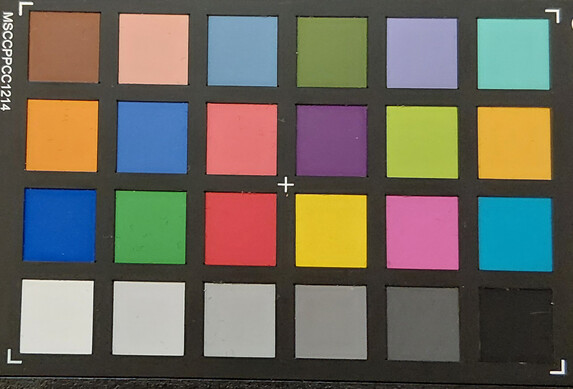

Accessories and warranty – Up to 3 years
Aside from the smartphone itself, the box only contains a USB cable.
Samsung offers either a 24-month warranty for the normal version or even a 36-month warranty for the Enterprise Edition of its smartphones.
Input devices and operation – The XCover 7 Pro at 120 Hz
The device's display has a refresh rate of up to 120 Hz, so it's slightly more responsive in some situations than the 60 Hz panel on the XCover7. The touchscreen usually responds accurately even when operated with wet hands or gloves.
The XCover button is located on the left-hand side of the case and can be assigned commands and apps relatively freely.
The XCover7 Pro comes with a fingerprint sensor. It is integrated into the standby button and unlocks the phone reliably and pretty quickly. Facial recognition can also be used to unlock the phone.
Display – The outdoor phone with an average brightness
Its display is a PLS panel with a size of 6.6 inches and a maximum resolution of 2,408 x 1,080 pixels.
Its brightness of 466 cd/m², which we measured during our test, is on average slightly below the level of other outdoor phones. When depicting small image excerpts, on the other hand, the XCover7 Pro just reached the 600 cd/m² specified by the manufacturer.
A clear blue cast was visible on our test device during our test using a spectrophotometer and the CalMAN software. Still, we didn't notice any PWM flickering.
| |||||||||||||||||||||||||
Brightness Distribution: 86 %
Center on Battery: 495 cd/m²
Contrast: 853:1 (Black: 0.58 cd/m²)
ΔE ColorChecker Calman: 5.85 | ∀{0.5-29.43 Ø4.78}
ΔE Greyscale Calman: 7 | ∀{0.09-98 Ø5}
99.8% sRGB (Calman 2D)
Gamma: 2.231
CCT: 8691 K
| Samsung Galaxy XCover 7 Pro PLS, 2408x1080, 6.6" | Samsung Galaxy XCover 7 PLS, 2408x1080, 6.6" | Oukitel WP200 Pro AMOLED, 2412x1080, 6.7" | Motorola ThinkPhone 25 p-OLED, 2670x1220, 6.4" | Cubot KingKong AX IPS, 2408x1080, 6.6" | |
|---|---|---|---|---|---|
| Screen | 15% | 20% | 80% | 5% | |
| Brightness middle (cd/m²) | 495 | 600 21% | 512 3% | 1125 127% | 553 12% |
| Brightness (cd/m²) | 466 | 561 20% | 511 10% | 1109 138% | 521 12% |
| Brightness Distribution (%) | 86 | 89 3% | 98 14% | 97 13% | 86 0% |
| Black Level * (cd/m²) | 0.58 | 0.57 2% | 0.5 14% | ||
| Contrast (:1) | 853 | 1053 23% | 1106 30% | ||
| Colorchecker dE 2000 * | 5.85 | 5.07 13% | 5.01 14% | 1.95 67% | 7.18 -23% |
| Colorchecker dE 2000 max. * | 9.78 | 8.1 17% | 6.93 29% | 3.37 66% | 10.23 -5% |
| Greyscale dE 2000 * | 7 | 5.7 19% | 3.5 50% | 2.4 66% | 7.1 -1% |
| Gamma | 2.231 99% | 2.249 98% | 2.241 98% | 2.099 105% | 2.291 96% |
| CCT | 8691 75% | 8162 80% | 7137 91% | 6336 103% | 8964 73% |
* ... smaller is better
Screen Flickering / PWM (Pulse-Width Modulation)
| Screen flickering / PWM not detected | |||
In comparison: 53 % of all tested devices do not use PWM to dim the display. If PWM was detected, an average of 8121 (minimum: 5 - maximum: 343500) Hz was measured. | |||
Display Response Times
| ↔ Response Time Black to White | ||
|---|---|---|
| 16.3 ms ... rise ↗ and fall ↘ combined | ↗ 10.1 ms rise | |
| ↘ 6.2 ms fall | ||
| The screen shows good response rates in our tests, but may be too slow for competitive gamers. In comparison, all tested devices range from 0.1 (minimum) to 240 (maximum) ms. » 37 % of all devices are better. This means that the measured response time is better than the average of all tested devices (20.2 ms). | ||
| ↔ Response Time 50% Grey to 80% Grey | ||
| 31.8 ms ... rise ↗ and fall ↘ combined | ↗ 15.5 ms rise | |
| ↘ 16.3 ms fall | ||
| The screen shows slow response rates in our tests and will be unsatisfactory for gamers. In comparison, all tested devices range from 0.165 (minimum) to 636 (maximum) ms. » 41 % of all devices are better. This means that the measured response time is similar to the average of all tested devices (31.6 ms). | ||
Performance – A decent amount of power
The XCover7 Pro is equipped with a Qualcomm Snapdragon 7s Gen 3, a modern and powerful mid-range SoC. This allowed the phone to outperform many other outdoor phones during our test.
During everyday use, it's usually sufficient for smooth operation, even when running somewhat more demanding apps. However, Samsung hasn't done itself any favors by installing relatively slow UFS 2.1 storage.
| UL Procyon AI Inference for Android - Overall Score NNAPI | |
| Motorola ThinkPhone 25 | |
| Average of class Smartphone (3769 - 81594, n=137, last 2 years) | |
| Samsung Galaxy XCover 7 Pro | |
| Average Qualcomm Snapdragon 7s Gen 3 (8460 - 8857, n=5) | |
| Samsung Galaxy XCover 7 | |
| Samsung Galaxy XCover 7 Pro | Samsung Galaxy XCover 7 | Oukitel WP200 Pro | Motorola ThinkPhone 25 | Cubot KingKong AX | Average 128 GB UFS 2.1 Flash | Average of class Smartphone | |
|---|---|---|---|---|---|---|---|
| AndroBench 3-5 | 87% | 267% | 174% | 144% | 21% | 321% | |
| Sequential Read 256KB (MB/s) | 1043.4 | 488.2 -53% | 997.7 -4% | 975.43 -7% | 1000.7 -4% | 761 ? -27% | 2223 ? 113% |
| Sequential Write 256KB (MB/s) | 232.6 | 501 115% | 936.4 303% | 856.48 268% | 915.2 293% | 296 ? 27% | 1838 ? 690% |
| Random Read 4KB (MB/s) | 194.4 | 212 9% | 368.5 90% | 287.4 48% | 230.6 19% | 154 ? -21% | 295 ? 52% |
| Random Write 4KB (MB/s) | 63.5 | 240.2 278% | 494.1 678% | 308.11 385% | 233.2 267% | 130.4 ? 105% | 335 ? 428% |
Emissions – Heats up quite a bit
Temperature
During our test, the temperatures on its case rose to over 50 °C at times after prolonged load—albeit locally limited. This can get unpleasant, especially as we measured these values at room temperature.
In the stress tests, however, we only noted minor performance losses after numerous runs of a benchmark.
(-) The maximum temperature on the upper side is 51.1 °C / 124 F, compared to the average of 35.2 °C / 95 F, ranging from 21.9 to 247 °C for the class Smartphone.
(-) The bottom heats up to a maximum of 48.4 °C / 119 F, compared to the average of 34 °C / 93 F
(+) In idle usage, the average temperature for the upper side is 25.5 °C / 78 F, compared to the device average of 32.9 °C / 91 F.
3DMark Steel Nomad stress test
| 3DMark | |
| Wild Life Stress Test Stability | |
| Samsung Galaxy XCover 7 | |
| Motorola ThinkPhone 25 | |
| Cubot KingKong AX | |
| Samsung Galaxy XCover 7 Pro | |
| Oukitel WP200 Pro | |
| Wild Life Extreme Stress Test | |
| Motorola ThinkPhone 25 | |
| Samsung Galaxy XCover 7 | |
| Cubot KingKong AX | |
| Samsung Galaxy XCover 7 Pro | |
| Oukitel WP200 Pro | |
| Steel Nomad Light Stress Test Stability | |
| Motorola ThinkPhone 25 | |
Speakers
Samsung's rugged phone comes with hybrid stereo speakers. This means that the earpiece supports a fully-fledged speaker on the bottom edge of the device. The result sounds quite decent as long as you don't turn the volume up all the way, then it becomes very treble-heavy.
External audio devices can be connected either via USB-C or Bluetooth. This worked fine during our test, but Samsung has proven to be quite stingy with its wireless audio codecs.
Samsung Galaxy XCover 7 Pro audio analysis
(+) | speakers can play relatively loud (87.3 dB)
Bass 100 - 315 Hz
(-) | nearly no bass - on average 18.7% lower than median
(±) | linearity of bass is average (11.3% delta to prev. frequency)
Mids 400 - 2000 Hz
(±) | higher mids - on average 6.3% higher than median
(+) | mids are linear (5.5% delta to prev. frequency)
Highs 2 - 16 kHz
(+) | balanced highs - only 4.4% away from median
(±) | linearity of highs is average (8.3% delta to prev. frequency)
Overall 100 - 16.000 Hz
(±) | linearity of overall sound is average (18.1% difference to median)
Compared to same class
» 16% of all tested devices in this class were better, 9% similar, 75% worse
» The best had a delta of 11%, average was 35%, worst was 134%
Compared to all devices tested
» 37% of all tested devices were better, 8% similar, 55% worse
» The best had a delta of 4%, average was 24%, worst was 134%
Motorola ThinkPhone 25 audio analysis
(+) | speakers can play relatively loud (86.6 dB)
Bass 100 - 315 Hz
(-) | nearly no bass - on average 23.8% lower than median
(±) | linearity of bass is average (10.3% delta to prev. frequency)
Mids 400 - 2000 Hz
(±) | reduced mids - on average 5.7% lower than median
(+) | mids are linear (5.6% delta to prev. frequency)
Highs 2 - 16 kHz
(+) | balanced highs - only 4.1% away from median
(+) | highs are linear (4.1% delta to prev. frequency)
Overall 100 - 16.000 Hz
(±) | linearity of overall sound is average (16.6% difference to median)
Compared to same class
» 8% of all tested devices in this class were better, 5% similar, 87% worse
» The best had a delta of 11%, average was 35%, worst was 134%
Compared to all devices tested
» 28% of all tested devices were better, 6% similar, 67% worse
» The best had a delta of 4%, average was 24%, worst was 134%
Battery life – Durable and replaceable
Power consumption
The Galaxy XCover7 Pro's good performance comes at the cost of slightly higher power consumption values.
You can charge the phone at a maximum of 15 watts, with one full charge taking a maximum of 2:30 hours.
| Off / Standby | |
| Idle | |
| Load |
|
Key:
min: | |
| Samsung Galaxy XCover 7 Pro 4350 mAh | Samsung Galaxy XCover 7 4050 mAh | Motorola ThinkPhone 25 4310 mAh | Average Qualcomm Snapdragon 7s Gen 3 | Average of class Smartphone | |
|---|---|---|---|---|---|
| Power Consumption | 16% | 30% | -24% | -25% | |
| Idle Minimum * (Watt) | 0.7 | 1 -43% | 0.6 14% | 1.293 ? -85% | 0.848 ? -21% |
| Idle Average * (Watt) | 1.3 | 1.2 8% | 0.8 38% | 1.695 ? -30% | 1.435 ? -10% |
| Idle Maximum * (Watt) | 1.7 | 1.3 24% | 1.1 35% | 1.848 ? -9% | 1.621 ? 5% |
| Load Average * (Watt) | 4.1 | 2.3 44% | 3.1 24% | 4.46 ? -9% | 6.99 ? -70% |
| Load Maximum * (Watt) | 8.9 | 4.5 49% | 5.4 39% | 7.73 ? 13% | 11.3 ? -27% |
* ... smaller is better
Power consumption: Geekbench (150 cd/m²)
Power consumption: GFXbench (150 cd/m²)
Runtimes
Samsung has made some improvements to the phone's battery capacity, now offering replaceable batteries with a capacity of up to 4,350 mAh.
This gives the XCover7 Pro good runtimes: you can surf the web for 14:49 hours before the battery needs to be charged or replaced.
| Samsung Galaxy XCover 7 Pro 4350 mAh | Samsung Galaxy XCover 7 4050 mAh | Oukitel WP200 Pro 8800 mAh | Motorola ThinkPhone 25 4310 mAh | Cubot KingKong AX 5100 mAh | |
|---|---|---|---|---|---|
| Battery runtime | -10% | 74% | 32% | 19% | |
| H.264 (h) | 16.1 | 14.4 -11% | 26.7 66% | ||
| WiFi v1.3 (h) | 14.8 | 13.4 -9% | 25.7 74% | 14.3 -3% | 17.6 19% |
| Reader / Idle (h) | 23.4 | 28.5 | |||
| Load (h) | 4.7 | 3.4 |
Notebookcheck total rating
Samsung Galaxy XCover 7 Pro
- 06/05/2025 v8
Florian Schmitt
Possible alternatives compared
Image | Model / Review | Price | Weight | Drive | Display |
|---|---|---|---|---|---|
| Samsung Galaxy XCover 7 Pro Qualcomm Snapdragon 7s Gen 3 ⎘ Qualcomm Adreno 810 ⎘ 6 GB Memory, 128 GB UFS 2.1 | Amazon: $576.99 List Price: 609€ | 240 g | 128 GB UFS 2.1 Flash | 6.60" 2408x1080 400 PPI PLS | |
| Samsung Galaxy XCover 7 MediaTek Dimensity 6100+ ⎘ ARM Mali-G57 MP2 ⎘ 6 GB Memory, 128 GB UFS 2.1 | Amazon: 1. $431.97 SAMSUNG Galaxy XCover6 Pro 5... 2. $363.67 SAMSUNG Galaxy XCover7 5G G5... 3. $6.98 3 Pack Tempered Glass Screen... List Price: 359€ | 240 g | 128 GB UFS 2.1 Flash | 6.60" 2408x1080 400 PPI PLS | |
| Oukitel WP200 Pro MediaTek Dimensity 8200 ⎘ ARM Mali-G610 MP6 ⎘ 24 GB Memory, 1024 GB | Amazon: $749.99 List Price: 645€ | 311 g | 1 TB UFS 4.0 Flash | 6.70" 2412x1080 394 PPI AMOLED | |
| Motorola ThinkPhone 25 MediaTek Dimensity 7300 ⎘ ARM Mali-G615 MP2 ⎘ 8 GB Memory, 256 GB | Amazon: 1. $6.95 Mr.Shield Screen Protector c... 2. $9.99 Charger for Motorola Edge 20... 3. $9.90 Zeking [2+2 Pack for Motorol... List Price: 499€ | 171 g | 256 GB UFS 3.1 Flash | 6.36" 2670x1220 462 PPI p-OLED | |
| Cubot KingKong AX Mediatek Helio G99 ⎘ ARM Mali-G57 MP2 ⎘ 12 GB Memory, 256 GB | Amazon: 1. $33.62 LCD Touch Screen for Cubot K... 2. $41.30 for Cubot Kingkong 9 Screen ... 3. $35.99 for Cubot Kingkong Power LCD... List Price: 260€ | 296 g | 256 GB UFS 3.0 Flash | 6.58" 2408x1080 401 PPI IPS |
Transparency
The selection of devices to be reviewed is made by our editorial team. The test sample was provided to the author as a loan by the manufacturer or retailer for the purpose of this review. The lender had no influence on this review, nor did the manufacturer receive a copy of this review before publication. There was no obligation to publish this review. As an independent media company, Notebookcheck is not subjected to the authority of manufacturers, retailers or publishers.
This is how Notebookcheck is testing
Every year, Notebookcheck independently reviews hundreds of laptops and smartphones using standardized procedures to ensure that all results are comparable. We have continuously developed our test methods for around 20 years and set industry standards in the process. In our test labs, high-quality measuring equipment is utilized by experienced technicians and editors. These tests involve a multi-stage validation process. Our complex rating system is based on hundreds of well-founded measurements and benchmarks, which maintains objectivity. Further information on our test methods can be found here.




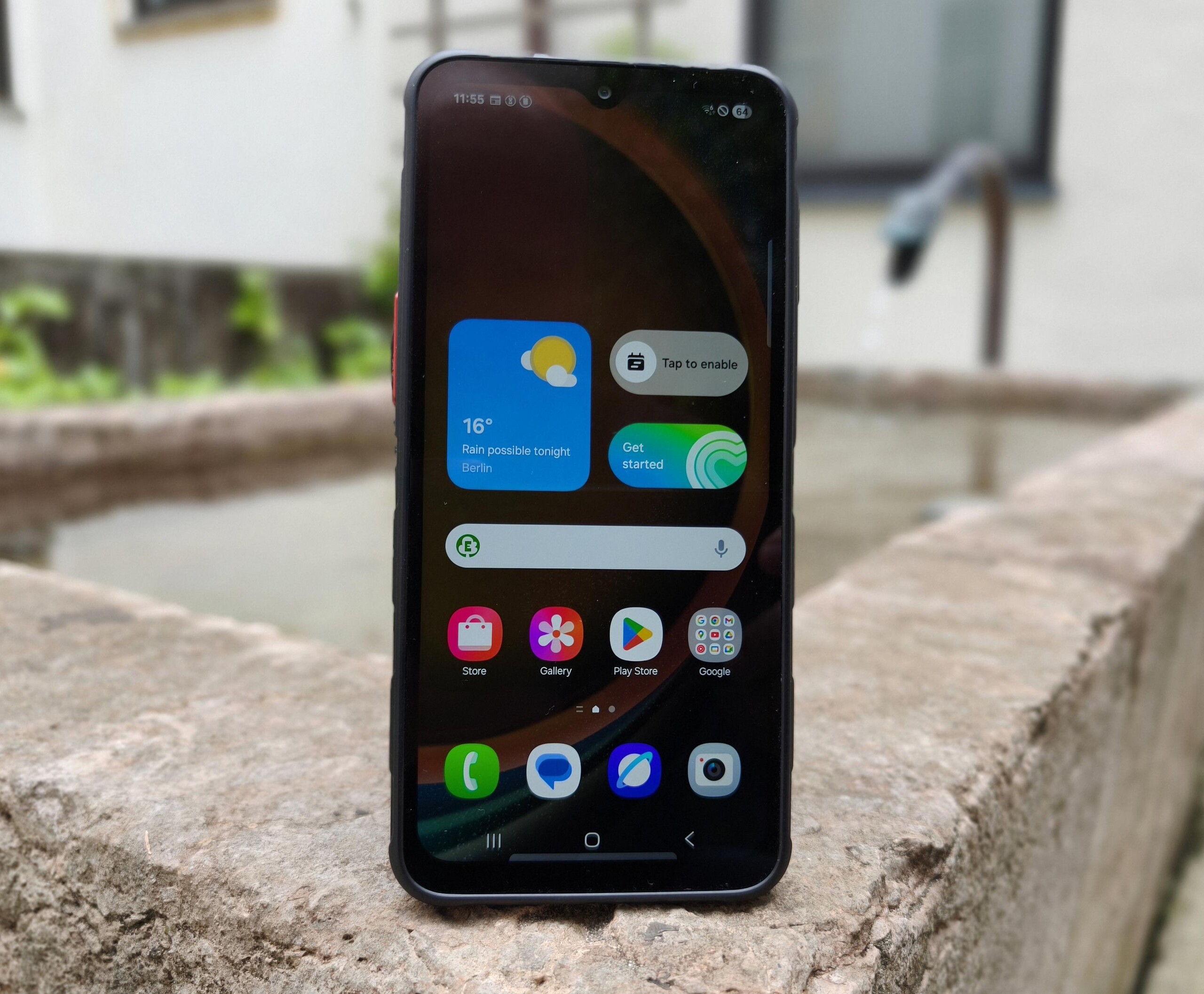

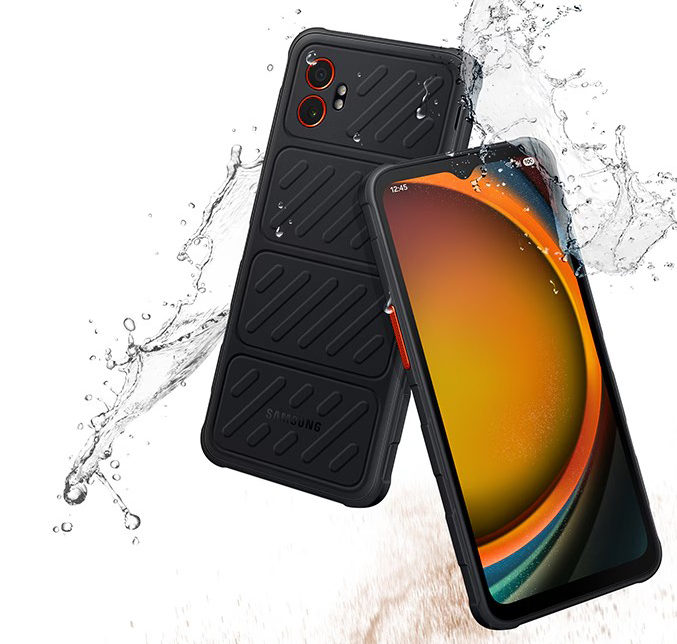






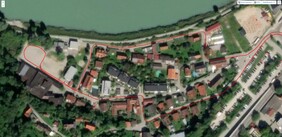

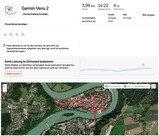

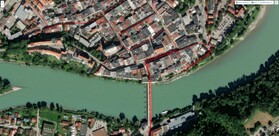


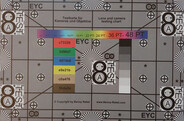



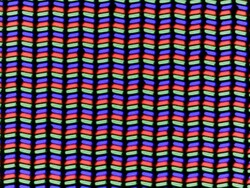
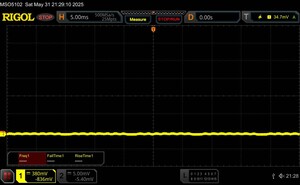
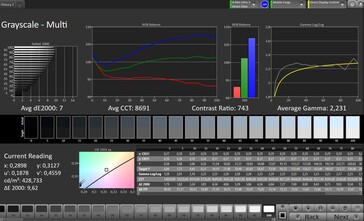
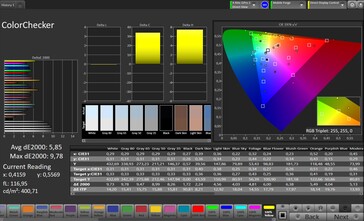
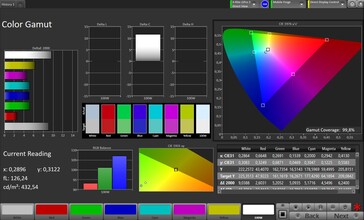
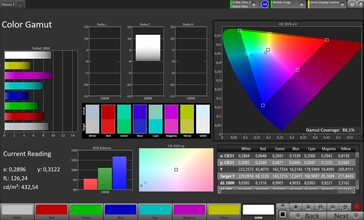
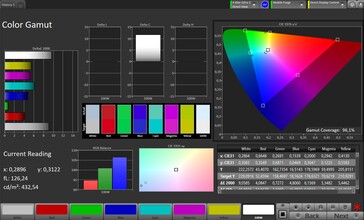
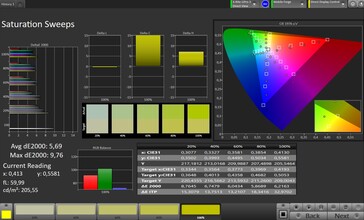
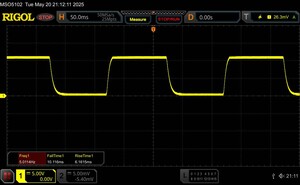
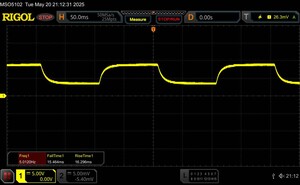
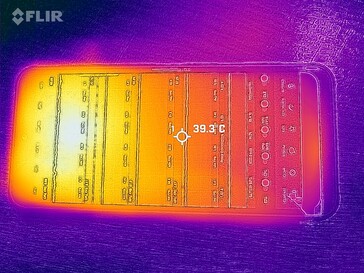
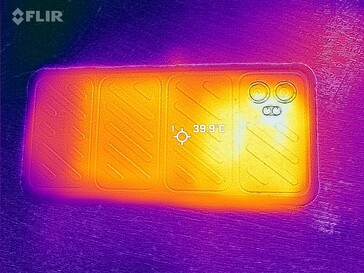
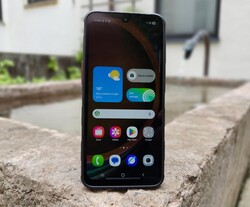
 Total Sustainability Score:
Total Sustainability Score: 




